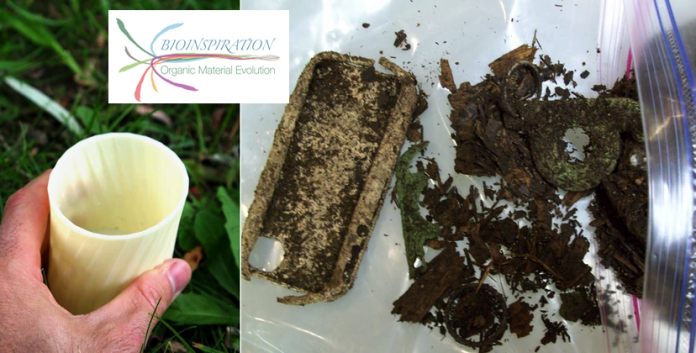August 20th, 2015
WillowFlex is a new flexible filament for 3D printers that offers unmatched superior performance with greater temperature resistance, better adhesion and faster printing speeds. The filament is made with a bioplastic called Terratek® Flex, a compostable elastomeric bioplastic made by Green Dot (Cottonwood Falls, KS).
BioInspiration prides itself on identifying materials that “follow nature’s lead”, i.e. are compostable, upcyclable, harmless, innovative and resilient. In the course of the search for a material that could meet these requirements, BioInspiration learned about Terratek® Flex, Green Dot’s compostable elastomeric bioplastic. It was a good fit: Green Dot had already been experimenting with ways to put their plastic into 3D Printing for a number of years.
WillowFlex offers makers and the decentralized production community a filament that is not just greener, but also offers unique physical properties unmatched by other flexible filaments currently available. As BioInspiration CEO Brian Crotty explained, “We see over and over that nature has a way of surprising us. When we began experimenting with WillowFlex, we found that as a bioplastic filament, it had several advantages inherent to the material.”
The material maintains structural integrity at temperatures above 212°F (100°C) and maintains flexibility at temperatures as low as 5°F (-15°C). WillowFlex has excellent layer adhesion and can also be printed at higher speeds, allowing for faster part production. Florian Deurer, who works in the filament laboratory at 3dk.berlin was immediately impressed with the material. “It’s totally uncommon for a plastic to be this flexible, this heat resistant and to also have a melting point that is that low that you can print it at temperatures uncommon for other plastics,” he said. “That’s what’s very interesting about this material.”
Analysis: This article shows how even 3d printing is making strives towards sustainability and trying to reduce the pollution of plastics. Creating a flexible, biodegradable, bioplastic filament is a first step in bringing bioplastics to the forefront of technology allowing humans to create plastic objects that will biodegrade over time.




